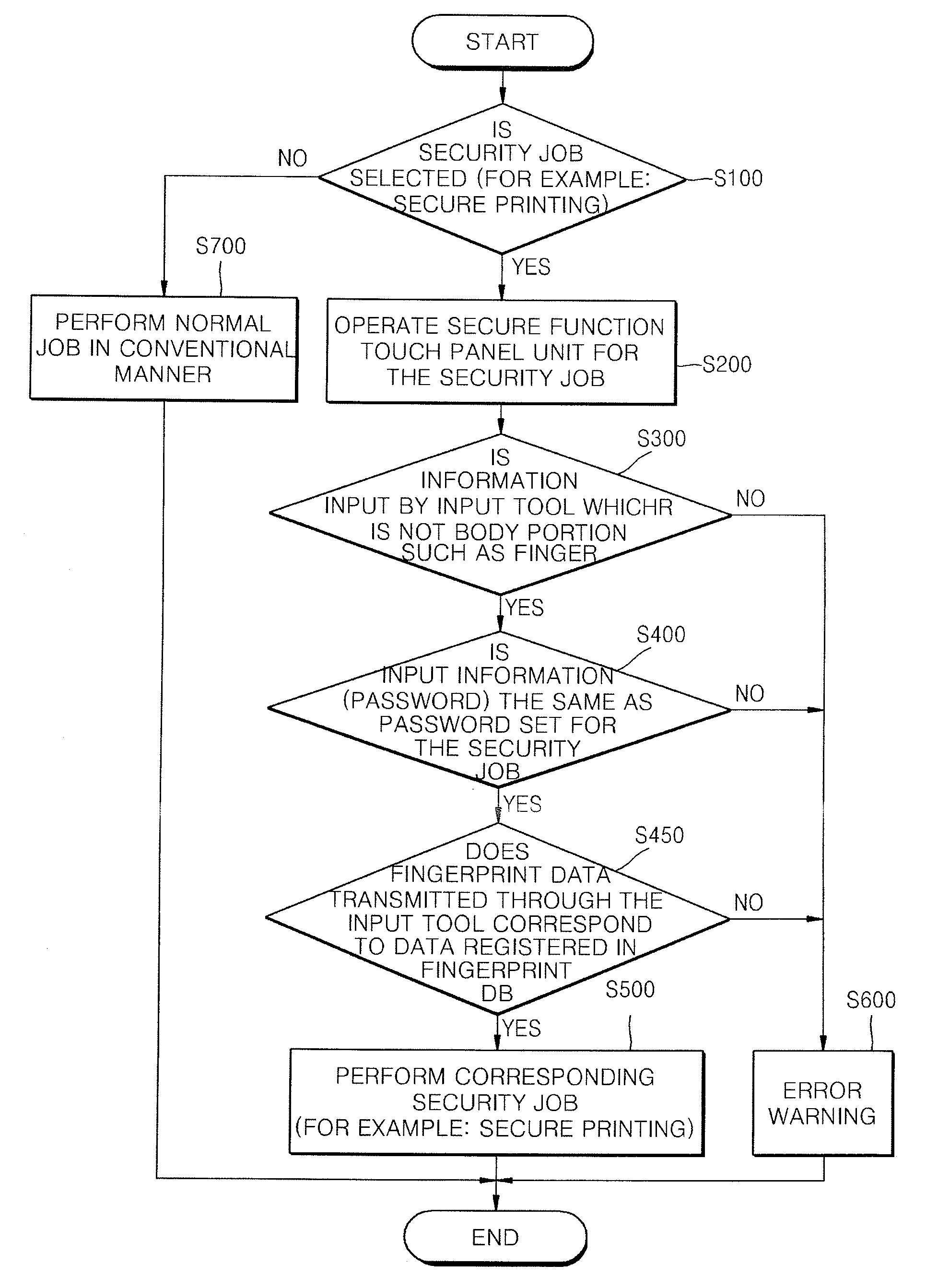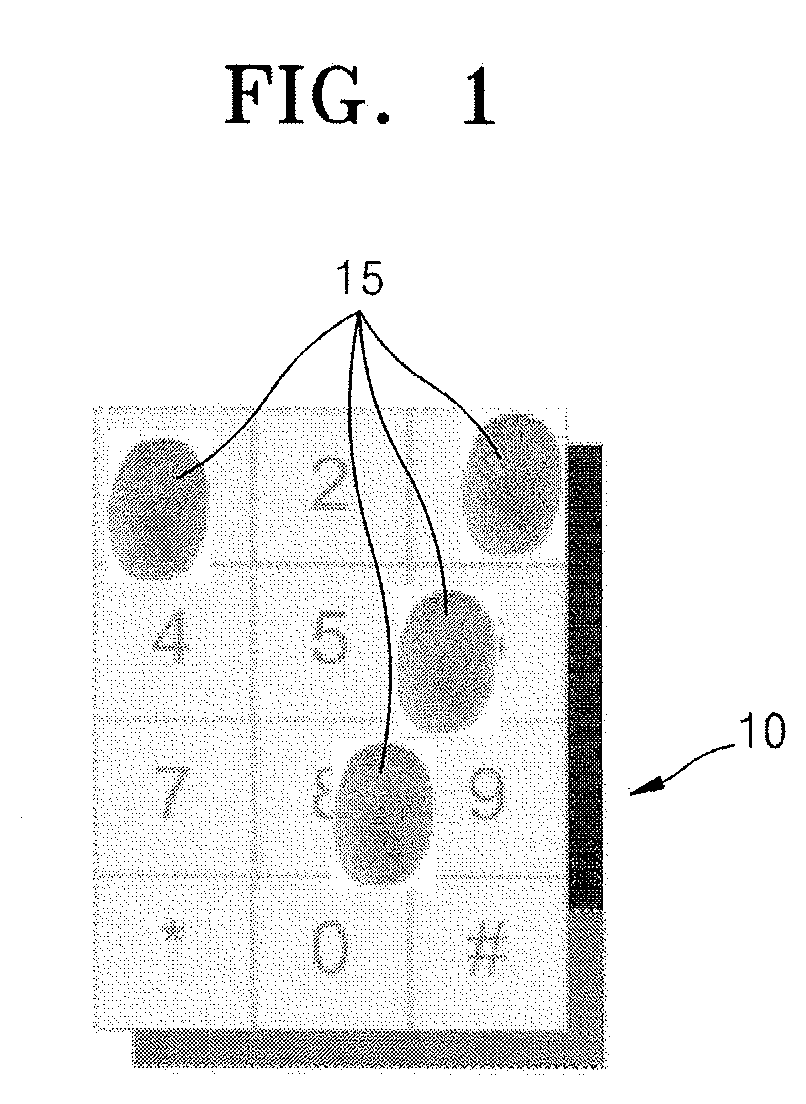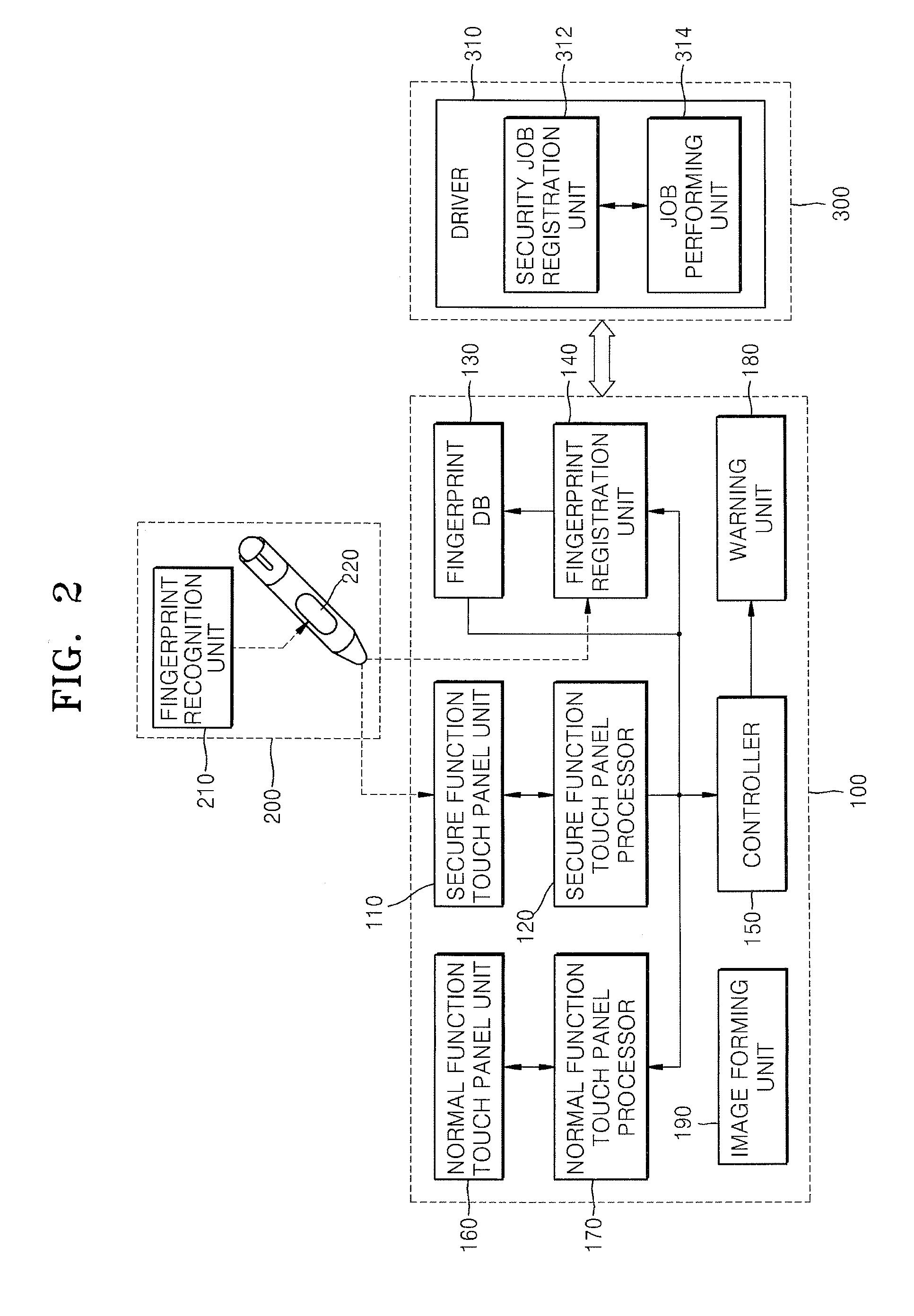Security method and system using touch screen
- Summary
- Abstract
- Description
- Claims
- Application Information
AI Technical Summary
Benefits of technology
Problems solved by technology
Method used
Image
Examples
Embodiment Construction
[0037]Hereinafter, exemplary embodiments of a security method and system using a touch screen according to the present general inventive concept will be described in detail with reference to the attached drawings. In the description, the detailed descriptions of well-known technologies and structures may be omitted so as not to hinder the understanding of the present general inventive concept. In addition, terms described later are terms defined in consideration of functions according to the present general inventive concept and may be changed according to an intention of a user or an operator or a usage. Therefore, definitions of the terms should be construed based on the description through the specification.
[0038]Reference will now be made in detail to the embodiments of the present general inventive concept, examples of which are illustrated in the accompanying drawings, wherein like reference numerals refer to the like elements throughout. The embodiments are described below in...
PUM
 Login to View More
Login to View More Abstract
Description
Claims
Application Information
 Login to View More
Login to View More - R&D
- Intellectual Property
- Life Sciences
- Materials
- Tech Scout
- Unparalleled Data Quality
- Higher Quality Content
- 60% Fewer Hallucinations
Browse by: Latest US Patents, China's latest patents, Technical Efficacy Thesaurus, Application Domain, Technology Topic, Popular Technical Reports.
© 2025 PatSnap. All rights reserved.Legal|Privacy policy|Modern Slavery Act Transparency Statement|Sitemap|About US| Contact US: help@patsnap.com



